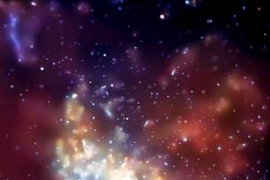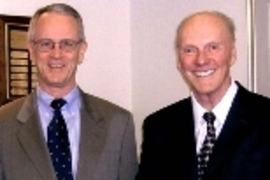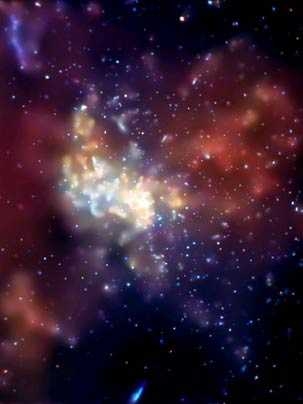MIT research on the most exciting questions in astrophysics and space science has been recognized by a $7.5 million gift from the Kavli Foundation that will jumpstart new studies of the cosmos.
"The Kavli gift allows us to invest in new scientific areas and new technologies at the forefront of these fields," said Professor of Physics Jacqueline N. Hewitt. "We can bring new tools to bear on some of the most interesting questions before us: What is the dark energy that appears to pervade the universe? How did the first star form? How does gravity work?" Hewitt is director of MIT's Center for Space Research, which will be renamed the Kavli Institute for Astrophysics and Space Research (KIASR).
"I am extremely pleased that the Kavli Institute for Astrophysics and Space Research at MIT is joining the network of Kavli Institutes," said Kavli Foundation Chairman and philanthropist Fred Kavli. "MIT has an outstanding record of research accomplishments and the KIASR will be a welcome and eminent partner to the other Kavli Institutes."
Kavli's lifelong work in instrumentation for the aerospace and automotive industries piqued his interest in the MIT center, which has a unique capacity to design and fabricate highly specialized scientific instrumentation for use in such important initiatives as the Chandra X-Ray Observatory and the LIGO project, which seeks to detect the gravitational waves predicted by Einstein.
MIT President Charles M. Vest praised Kavli "for the wisdom of focusing his philanthropy on fundamental science. Our hope is that this grant will mark the start of a long and fruitful relationship between MIT and the Kavli Foundation, which has quickly established itself as a leader in funding scientific research at the cutting edge of astrophysics, neuroscience and nanoscience."
MIT Provost Robert A. Brown said, "The establishment of the KIASR at MIT is a wonderful development for MIT and for astrophysics research. The new resources will greatly enhance the science that can be accomplished by our faculty, students and research staff."
Said MIT's Dean of Science, Robert J. Silbey, "The entire physics community at MIT will benefit from this wonderful development that will enhance our efforts in both observational and theoretical astrophysics."
Among other activities, KIASR will be home to three-year Kavli Research Programs that will enable the exploratory and innovative work necessary to develop new research areas. The inaugural program, led by Professor of Physics Edmund Bertschinger, will explore dark energy and dark matter. Over ninety-five percent of the mass-energy in the universe is in a form other than conventional atomic matter. The normal stuff of laboratory physics (and all science and technology) is little more than the froth on a cosmic ocean of dark matter and energy.
Bertschinger's team, which includes five other leading scholars in cosmology, particle physics and astrophysics, will work toward determining the composition and properties of dark matter and energy. Ultimately the research could advance our understanding of the deepest aspects of nature, including the origins of space, time, and matter.
The new MIT institute is the tenth created by the Kavli Foundation since its founding in December 2000. All focus on neuroscience, cosmology, or nanoscience. "I have selected these three areas of emphasis because I believe they provide the greatest opportunity for major scientific breakthroughs and will have long-range benefits for humanity," said Kavli.
The nine other Kavli Institutes are located at Columbia University (brain science), Stanford (particle astrophysics & cosmology), University of California at San Diego (brain & mind), University of California at Santa Barbara (theoretical physics), Delft University of Technology in the Netherlands (nanoscience), Yale (neuroscience), Cornell University (nanoscale science), California Institute of Technology (nanoscience), and University of Chicago (cosmological physics).











